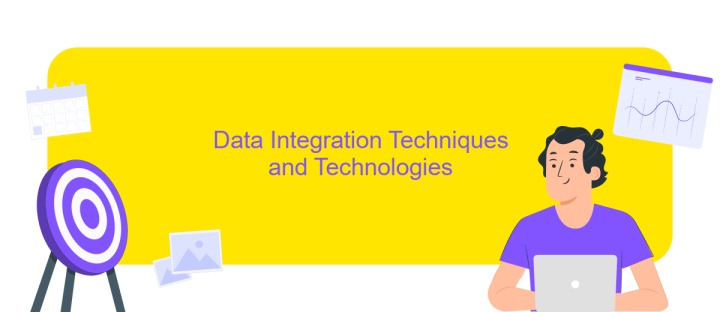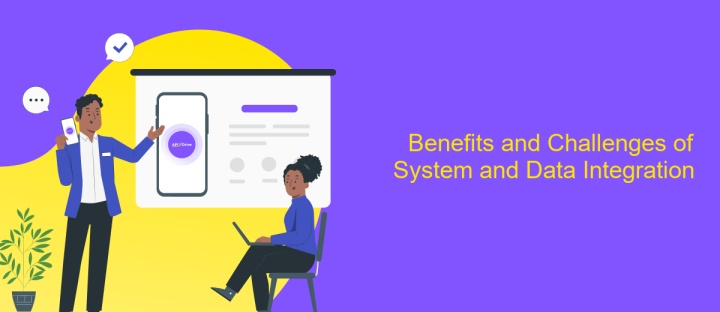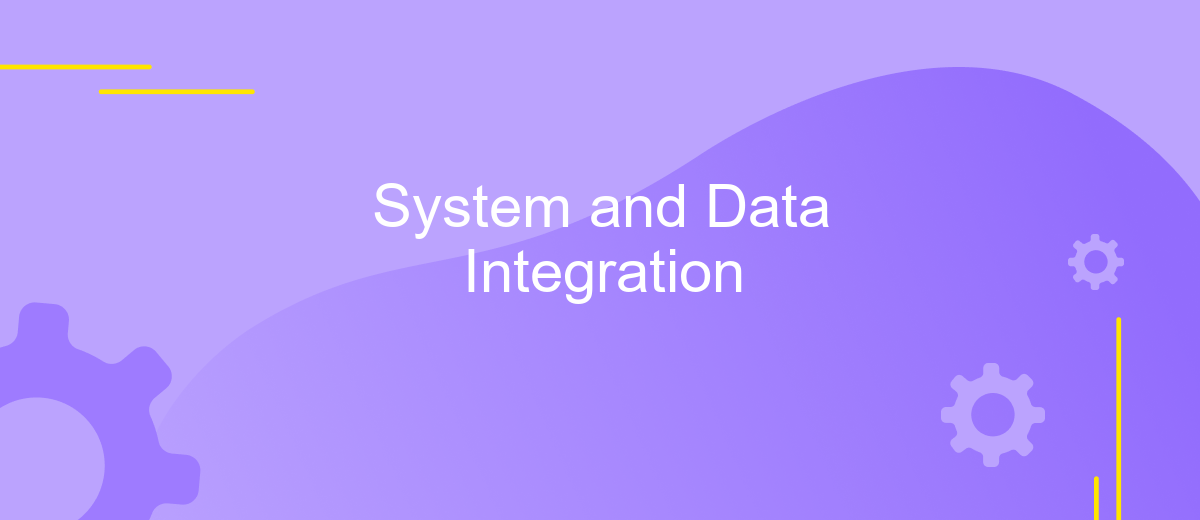System and Data Integration
In today's rapidly evolving technological landscape, system and data integration play a crucial role in ensuring seamless communication and collaboration across various platforms. By bridging disparate systems and consolidating data, organizations can enhance operational efficiency, improve decision-making, and foster innovation. This article explores the key components, challenges, and best practices of system and data integration, providing insights into how businesses can leverage these processes to drive growth and maintain a competitive edge.
Understanding System and Data Integration
System and data integration is a critical aspect of modern business operations, enabling seamless communication between disparate systems and ensuring data consistency across platforms. As organizations grow, they often utilize various software applications, each serving specific functions. Integration allows these systems to work together, enhancing efficiency and reducing the risk of data silos.
- Data Consistency: Ensures uniformity and accuracy across all systems.
- Improved Efficiency: Streamlines processes by automating data exchange.
- Enhanced Decision-Making: Provides comprehensive insights by consolidating data.
- Scalability: Supports business growth by integrating new tools seamlessly.
- Cost Reduction: Minimizes manual data entry and associated errors.
Implementing effective system and data integration requires a strategic approach, considering the unique needs and existing infrastructure of an organization. This process often involves the use of middleware, APIs, and other integration tools to connect applications. By prioritizing integration, businesses can achieve greater agility, respond faster to market changes, and maintain a competitive edge. Ultimately, successful integration fosters a more cohesive and responsive IT environment, driving innovation and growth.
Key Approaches to System Integration

System integration is a crucial process that involves combining different subsystems into a single, cohesive system to ensure they function seamlessly together. One key approach to system integration is the use of middleware, which acts as a bridge between different applications and data sources, facilitating communication and data exchange. Middleware can streamline processes and improve efficiency by reducing the complexity of interactions between disparate systems. Another approach is the adoption of standards and protocols, such as RESTful APIs and SOAP, which provide a common language for systems to communicate, ensuring compatibility and interoperability.
Additionally, leveraging cloud-based integration platforms like ApiX-Drive can significantly enhance system integration efforts. ApiX-Drive offers a user-friendly interface and a wide range of pre-built connectors, allowing businesses to automate workflows and synchronize data across multiple applications without extensive coding. This service helps organizations quickly adapt to changing business needs and integrate new applications as they grow. By using such platforms, companies can reduce integration costs and time, while maintaining flexibility and scalability in their IT infrastructure.
Data Integration Techniques and Technologies

Data integration is a critical component in the modern data-driven landscape, enabling organizations to combine data from various sources into a unified view. This process ensures that data is accessible, accurate, and consistent across different systems. By leveraging data integration, businesses can enhance decision-making, streamline operations, and gain a competitive edge.
- ETL (Extract, Transform, Load): This technique involves extracting data from various sources, transforming it into a suitable format, and loading it into a target system.
- Data Virtualization: This method allows access to data without requiring physical storage, enabling real-time integration and analysis.
- API Integration: APIs facilitate the seamless exchange of data between applications, ensuring that systems can communicate and share information efficiently.
- Data Warehousing: This approach involves collecting and managing data from different sources in a centralized repository for analysis and reporting.
Advancements in technology have led to the development of sophisticated tools that support data integration efforts. These include cloud-based platforms, which offer scalability and flexibility, and machine learning algorithms that automate data mapping and transformation processes. By employing these techniques and technologies, organizations can unlock the full potential of their data assets, driving innovation and growth.
Benefits and Challenges of System and Data Integration

System and data integration is a crucial aspect of modern business operations, enabling seamless communication between various software applications and data sources. By integrating systems, organizations can achieve greater efficiency, reduce redundancy, and enhance data accuracy. This integration facilitates real-time data access, allowing businesses to make informed decisions quickly and effectively.
Despite its benefits, system and data integration poses several challenges. One of the primary challenges is the complexity involved in integrating disparate systems with different architectures and protocols. Additionally, data quality issues can arise, complicating the integration process and potentially leading to inaccurate insights. Security concerns also play a significant role, as integrating systems can create vulnerabilities that need to be addressed.
- Improved efficiency and productivity
- Enhanced data accuracy and consistency
- Real-time data access and decision-making
- Reduced operational costs and redundancy
- Potential security vulnerabilities
- Complexity in integrating diverse systems
In conclusion, while system and data integration offers numerous advantages, it requires careful planning and execution to overcome its inherent challenges. Organizations must invest in robust integration strategies and technologies to ensure successful implementation and to maximize the benefits of integrated systems.
Best Practices and Future Trends
In the realm of system and data integration, adhering to best practices is crucial for seamless operations. One key practice is to prioritize data quality and consistency across integrated systems. Ensuring that data is clean and standardized before integration can prevent errors and enhance decision-making. Additionally, leveraging APIs for integration, such as those offered by ApiX-Drive, can simplify the process by providing a user-friendly platform for connecting various applications without extensive coding knowledge.
Looking to the future, trends in integration are shifting towards increased automation and AI-driven solutions. These advancements aim to enhance efficiency by minimizing manual intervention and enabling real-time data processing. Furthermore, the rise of cloud-based integration services is expected to continue, offering scalable and flexible solutions that can adapt to evolving business needs. As organizations increasingly rely on data-driven insights, the demand for robust and agile integration solutions will grow, driving innovation in this critical field.
FAQ
What is system and data integration?
Why is system and data integration important for businesses?
What challenges are commonly faced during system integration?
How can businesses automate their data integration processes?
What is ApiX-Drive, and how does it help with integration?
Do you want to achieve your goals in business, career and life faster and better? Do it with ApiX-Drive – a tool that will remove a significant part of the routine from workflows and free up additional time to achieve your goals. Test the capabilities of Apix-Drive for free – see for yourself the effectiveness of the tool.

